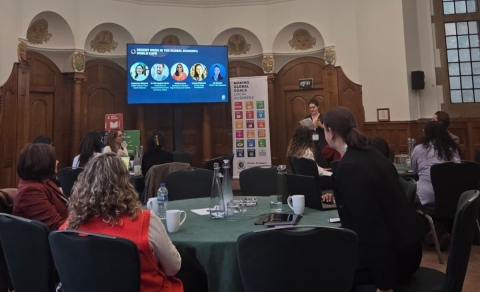UNCDF and UNDP join forces to drive private capital into SDG priorities
14 SEPTEMBER, 2022

As a global community, we are experiencing a multitude of threats, from climate change, a global pandemic and the war in Ukraine. The combination of these crises has ravished government balance sheets, diverted aid budgets and put pressure on our global food, energy and financial systems. Between 2019 and 2020 as a result of the Covid-19 pandemic alone, the annual SDG and climate investment gap increased from $2.5 trillion to $4.2 trillion (OECD). Those that can least afford it are impacted the most, reversing recent decades of sustainable development gains. Market failures and barriers to aligning investment with sustainable development increase the risk and limit the flow of private capital into areas where resources are most needed.
At the same time, there are huge economic gains from sustainable investments. For example, investment in climate action could yield a direct economic gain of $26 trillion through to 2030 compared with business-as-usual, according to the New Climate Economy Report. Hence, businesses and investors are increasingly seeking to identify, increase and manage their SDG investments and aligning only 1.5% of the estimated $380 trillion in global financial assets would close the SDG and climate investment gaps and promote sustainable development for all (OECD).
There is a clear need and opportunity to align and leverage the world’s private capital with sustainability and SDG solutions. We, the United Nations Development Programme (UNDP) and the United Nations Capital Development Fund (UNCDF), as sister agencies, came together and asked a key question to ourselves: how can we make sure that our products works for the benefit of those who need them the most; and how can we make sure that investments are more aligned with the Sustainable Development Goals (SDGs) despite the constant changes of the global financial ecosystem.
Through its Sustainable Finance Hub (SFH), UNDP supports the significant transformations within the global financial systems, and within entities that own, manage or regulate financial flows and transactions, which are required to finance the SDGs. Through UNDP’s SDG Investor Map, the market intelligence tool supporting organizations to direct capital to where it is most needed, UNDP provides the evidence required for investment opportunities where SDG priorities, government policy and market opportunity converge. After the completion of 23 SDG Investor Maps, with more on the way, and the identification of over 400 investment opportunities, which are publicly available on the SDG Investor Platform, we have seen significant appetite from private investors to deploy capital into those areas to both deliver financial results and achieve positive social and environment outcomes.
In order to provide the “last mile” information to realize these investment opportunities, UNCDF offers its pipeline of companies and projects across markets, which have gone through a thorough due diligence process undertaking impact and financial assessments of the investments. UNCDF leverages its sourcing and financing capacities for the SDG Investor Maps to co-develop case studies within the identified investment opportunities as sample pipeline for investor consideration. Starting with the SDG Investor Map findings from Uganda, UNCDF showcases various pipeline opportunities on the SDG Investor Platform, for example within food processing and collection services.
As sister agencies, UNDP and UNCDF seek to scale up this collaboration and offer governments and the private sector coordinated support services. The two UN agencies are populating pipeline companies for other emerging markets, including in Tanzania where the SDG Investor Map has been produced with joint support by UNDP and UNCDF. UNDP and UNCDF are also applying our capacities to country-level contexts where we work collaboratively to identify additional investment pipeline with significant SDG potential. Through envisaged joint challenge funds, we draw on the UNCDF investment continuum for development impact with financing vehicles offering blended financing opportunities tailored to the needs of growth and expansion stage Small and Medium Enterprises (SMEs). This include a specific emphasis on SMEs that find themselves in the “missing middle” gap in the existing financial architecture, with capital needs that are too large for microfinance and too small for commercial providers.
Finally, in order to enable organizations to translate their positive sustainability, impact intentions and commitments into decisions, actions and results, UNDP and UNCDF are working together to utilize the UNDP SDG Impact Standards as internal management standards within UNCDF’s catalytic finance offering. We believe the adoption of the SDG Impact Standards will move the needle towards a world where sustainability and the SDGs lie at the heart of private sector value creation – no longer an add on to what business gets done but rather how all business is done.
The complementary mandates and capabilities of UNDP and UNCDF, dating back to their design in the mid-1960s, have never been more pronounced or timely than they are today. UNDP, as the UN’s development agency, supports governments with technical assistance to achieve the Sustainable Development Goals (SDGs) and national development objectives across 170 countries and territories. Meanwhile, UNCDF, the UN’s catalytic finance agency for the world’s 46 least developed countries, offers the unique capital activation capabilities required in a world where all financing must be deployed responsibly and sustainably in pursuit of net positive impact for people and planet.
We are very proud to announce this partnership and we have full confidence we will achieve concrete results together.
Source: UNDP & UNCDF












